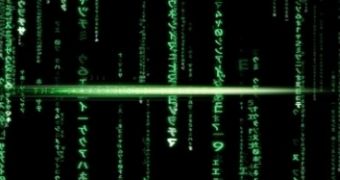Supercomputers could be able to create extremely detail-rich virtual realities, that are strikingly similar to the ones presented in The Matrix. Researcher Michael McGuigan claims that extremely powerful supercomputers could be able to render virtual worlds that are so accurate that they can be mistaken for the real environment.
The new worlds would allow the subjects to interact with the virtual environment as it would be able to do in the real life. "By interaction we mean you could control an object - rotate it, for example - and it would render in real-time," McGuigan says.
The existing computers can spice up artificial scenes with high level of details, yet they require incredible amounts of graphics power. For instance, an image with the necessary amount of detail to trick the human into taking it for real would take hours to render completely. In order to overcome this obstacle, McGuigan says that photorealism should be paired with software that can render images in real-time, at a high frame rate per second.
The most powerful computer in the world is IBM's BlueGene/L, that sports 18 racks, each rigged with 2000 standard PC processors that work in parallel for a joint processing speed of 103 teraflops. McGuigan tested the supercomputer's ability to render photorealistic scenes and found out that it can run ray-tracing software 822 times faster than on a standard PC.
"The nice thing about this ray tracing is that the human eye can see it as natural," McGuigan says. "There are actually several types of ray-tracing software out there - I chose one that was relatively easy to port to a large number of processors. But others might be faster and even more realistic if they are used in parallel computing."
No matter how powerful the BlueGene/L is, it still cannot render the hi-res images at a sufficient pace to fool the human. McGuigan considers that, in order to pass the test, the computer needs a rough computing power of about one petaflop (1000 teraflops).
The advent of virtual worlds might be possible in a couple of years now. However, there are much more challenges that need to be addressed before proclaiming it as a fully-fledged alternative, such as coordinated movement and realistic animation, especially when it comes to fluids.

 14 DAY TRIAL //
14 DAY TRIAL //